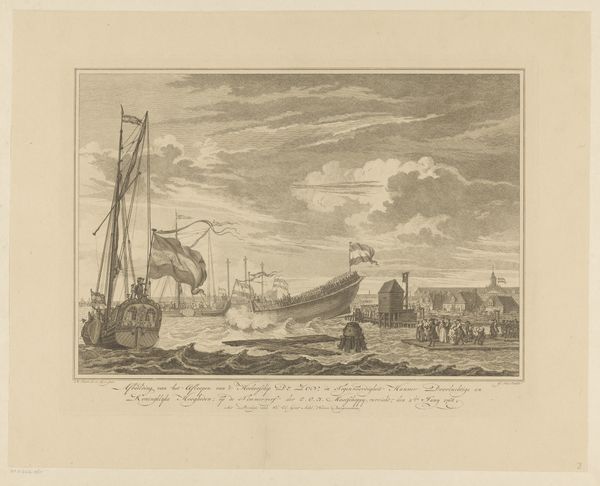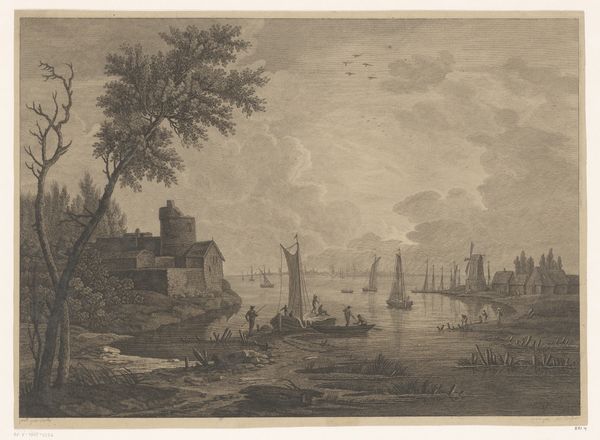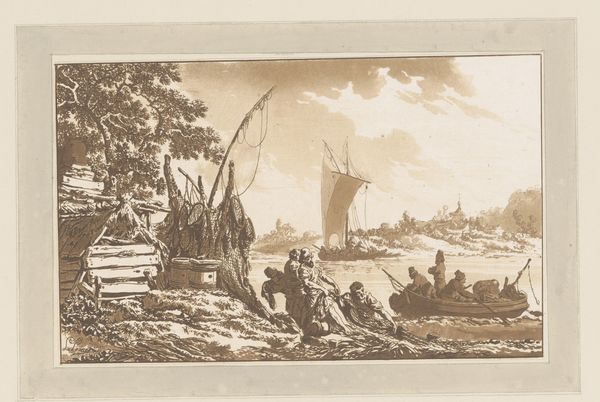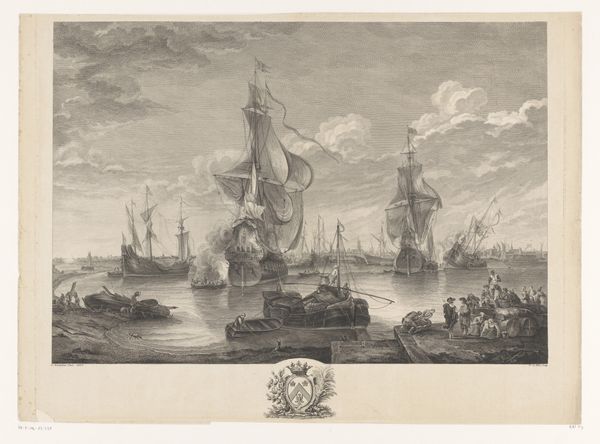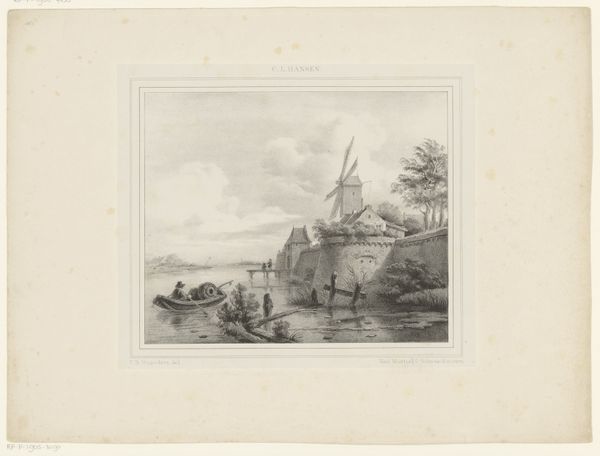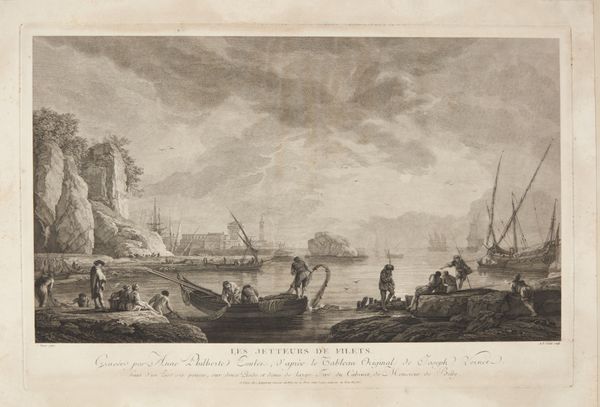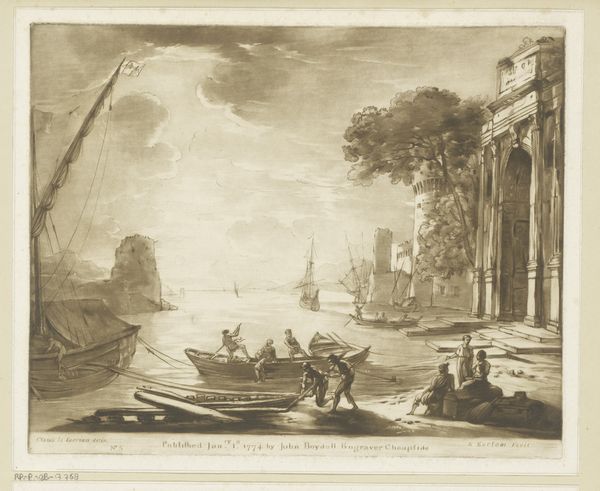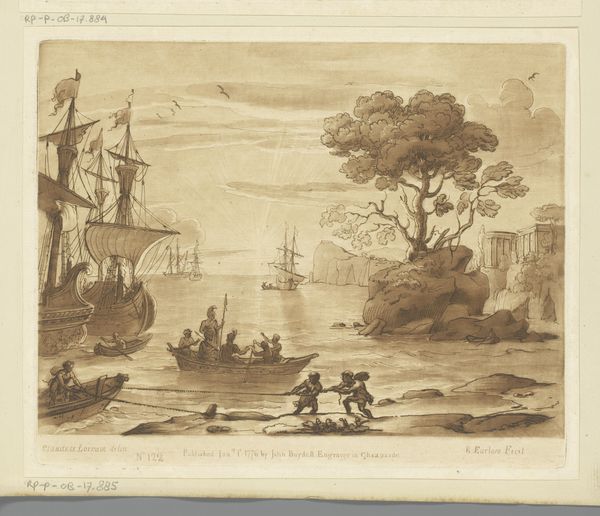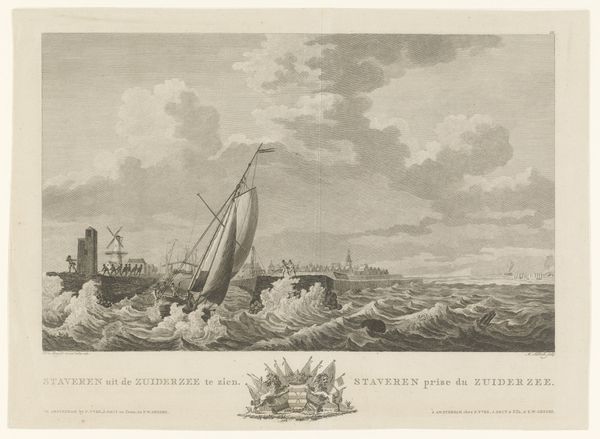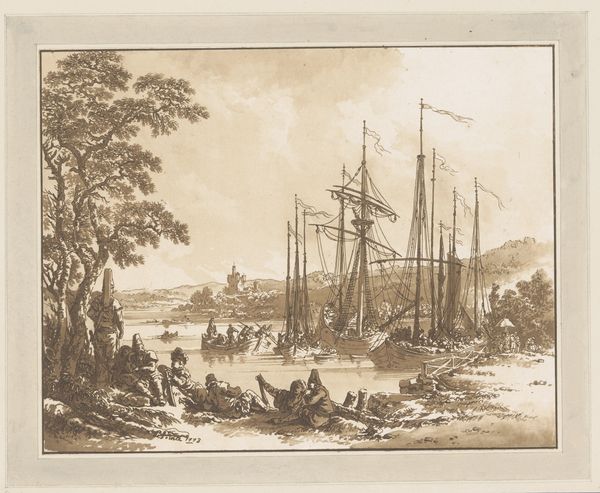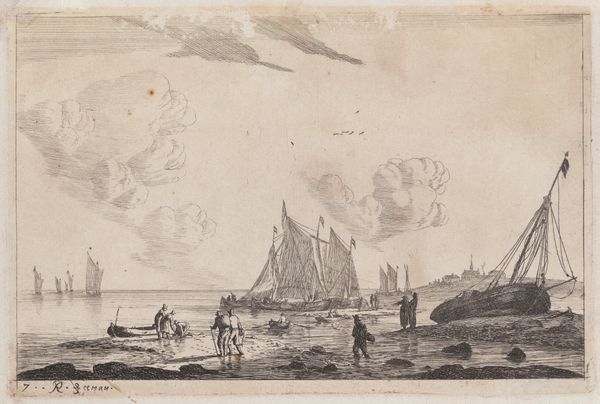
Dimensions: height 302 mm, width 361 mm
Copyright: Rijks Museum: Open Domain
Curator: Up next is "Vissers in een mediterraan kustlandschap," which translates to "Fishermen in a Mediterranean Coastal Landscape." This etching and engraving by Pietro Antonio Martini dates to sometime between 1748 and 1783. Editor: The muted grays create a serene, almost melancholic mood. It feels… timeless, even though I know it's centuries old. It’s beautifully composed; the way the coastline curves draws the eye right into the scene. Curator: Absolutely. The light, in particular, directs us through symbolic layers. See how the fisherman, almost like a figure from classical mythology, is situated closest, drawing a line from this foreground towards a distant cityscape? Light emanating from that port suggests safe harbors and return. Editor: And the ordinary people… the fishermen, the figures in boats, all performing their daily labor near what seems like a looming stone edifice. To me, it highlights the complicated relationship between humanity and the natural world. And whose "safe harbors" were really being prioritized by 18th-century society? Curator: That tension between the built environment and the natural is something Martini repeatedly explores. The lighthouse stands as a powerful, unwavering structure amid the potentially chaotic sea. But its architectural details mimic the classical structures favored during this period, embodying continuity. Perhaps safety is an agreed social concept, dependent on historical precedents, rather than pure geography? Editor: Perhaps… it makes me consider issues around coastal access then and now, class, privilege... even who gets remembered in history and how that’s framed. Those subtle details of daily life become so significant. Curator: For me, the engraving, so precise in its lines, creates an evocative image. The detail—from the clouds to the ripples on the water—speaks to something universal. Even today, the rituals associated with the sea offer us glimpses into the continuity of human experience. Editor: I find myself dwelling on who isn't visible, and the unacknowledged narratives of marginality beneath these serene, picturesque scenes. A reminder that the visual symbols only carry certain messages to some eyes, but obfuscate or omit the true realities of a shared experience. Curator: That tension—between what is depicted, and what lies concealed—undeniably resonates. Perhaps our collective cultural memory always requires an element of imagining the invisible alongside the seen. Editor: Precisely, prompting us to acknowledge the past, challenge the present, and broaden who gets access to that continuity in the future.
Comments
No comments
Be the first to comment and join the conversation on the ultimate creative platform.
